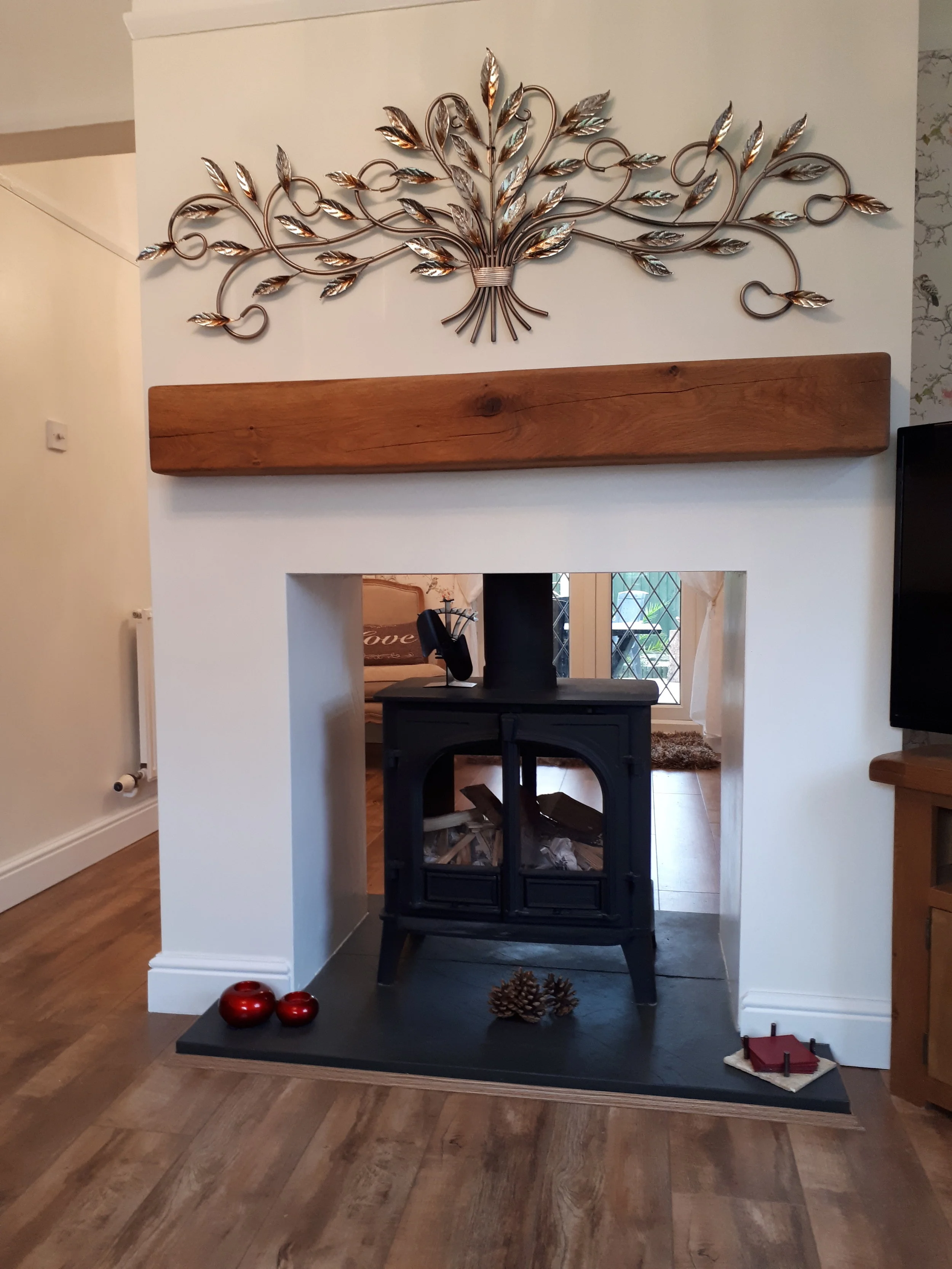Frequently asked questions
What wood should I burn in my stove?
No matter what type of wood you choose it is vital that that it is dried before you burn. We recommend that the wood you use is seasoned for at least a year (preferably two) before burning. Never burn damp or wet wood as it creates a lot of smoke and can make the stove dirty i.e. blacken glass on door and create sooty deposits that can affect the life of the flue liner and increase the need to have the stove swept.
Here is a list of some of the best woods to burn on your stove:
1 Ash
Ash produces a steady flame with a good heat and burns well even when green. It will burn successfully on its own, so does not need to be burned in a mix of different species. Traditionally said to be one of the best woods for burning.
2 Oak
Oak is the slowest timber to season, at approximately 2.5cm a year and ideally should be seasoned for a minimum of two years. Because of its density, it is slow to burn and is best used in a mix of faster-burning logs. It can help to keep the fire going at night if required.
3 Birch
Birch makes excellent firewood, producing a good heat, although it burns relatively quickly, so it’s best to use it in a mix of slower-burning woods, such as elm or oak. Will burn unseasoned although the sap can cause a build up of deposits in the flue. The bark can be peeled off and used as a natural firelighter.
4 Beech
Beech is a superb burning wood, although it has a high water content so needs to be dried well; ideally, it should be seasoned for three years before use. It does not need to be burned in a mix.
5 Cherry
Cherry burns slowly with a good heat output and gives off a lovely aroma. Needs to be well seasoned, although strips of the bark can also be used as natural firelighters.
6 Sycamore
Sycamore burns well when seasoned with a moderate heat output. It seasons very quickly, usually within just one year.
How can I tell if my wood is dry?
The easiest way to check if your wood is dry enough to burn is with a moisture meter, they are widely available on line and range greatly in quality and price.
Alternatively if you don't have a meter there are other ways to tell if your wood will burn efficiently:
- Two dry pieces of wood banged together will sound hollow whereas damp or wet wood will sound solid and dull.
- Dry wood weighs much less than wet wood
- Wood tends to crack and check when drying
- Wood tends to darken from white or cream to grey or yellow as it dries
Do I need to have an air brick if I get a stove?
Any stove larger than 5kW will require additional ventilation in the room
How often do I need to have my stove swept?
We would recommend that your stove is swept at least once a year, normally at the beginning of the winter season in preparation for high usage
Why do I need to have my chimney lined?
Smoke and dangerous fumes can leak into other parts of the building. These are usually the upstairs rooms. A flue liner eradicates this as it provides a sealed passage from the stove to the outside.
A stainless flue liner has a continuous smooth chimney surface and consistent flue diameter. It maintains the flow and velocity of the flue gases which travel faster, this reduces deposits as the gases spend less time in the chimney and cool less. Flue liners improve the performance of the flue. The smooth surface also makes the flue easier to sweep than an unlined chimney.
What size stove should I get?
As a rough guide measure the length, width and height of the room in meters, multiply them together and divide by 14. This figure will tell you the size of stove required to heat the room in kilowatts (to achieve a room temperature of 21degrees you will need approximately 1kw of heat for every 14 cubic meters of space).
This is however only a guide as various different factors can influence the exact heat requirements such as, the number of external walls, how old the property is, if the windows are double glazed, etc. If you are unsure on anything do not hesitate to get in touch.
Do I need a carbon monoxide alarm?
Yes. Carbon monoxide is odourless, colourless, tasteless and extremely poisonous. It is produced by any flame producing appliance. We install one on every job as standard.
Are stoves more beneficial than an open fire?
Yes, for various reasons; Open fires are only about 20% efficient meaning that of all the heat produced, the majority of it is lost up the chimney. Stoves generally work on around 75 - 80% efficiency. Stoves also have a much higher heat output because an enclosed fire reaches much higher temperatures than an open flame. In a wood burning stove you will burn up to 75% less logs than an open fire making them much cheaper to run.
As a stove is enclosed they are a much safer option than an open fire as all of the fumes created are confined and the risk of sparks escaping are virtually eliminated, preventing any risk of fire.


